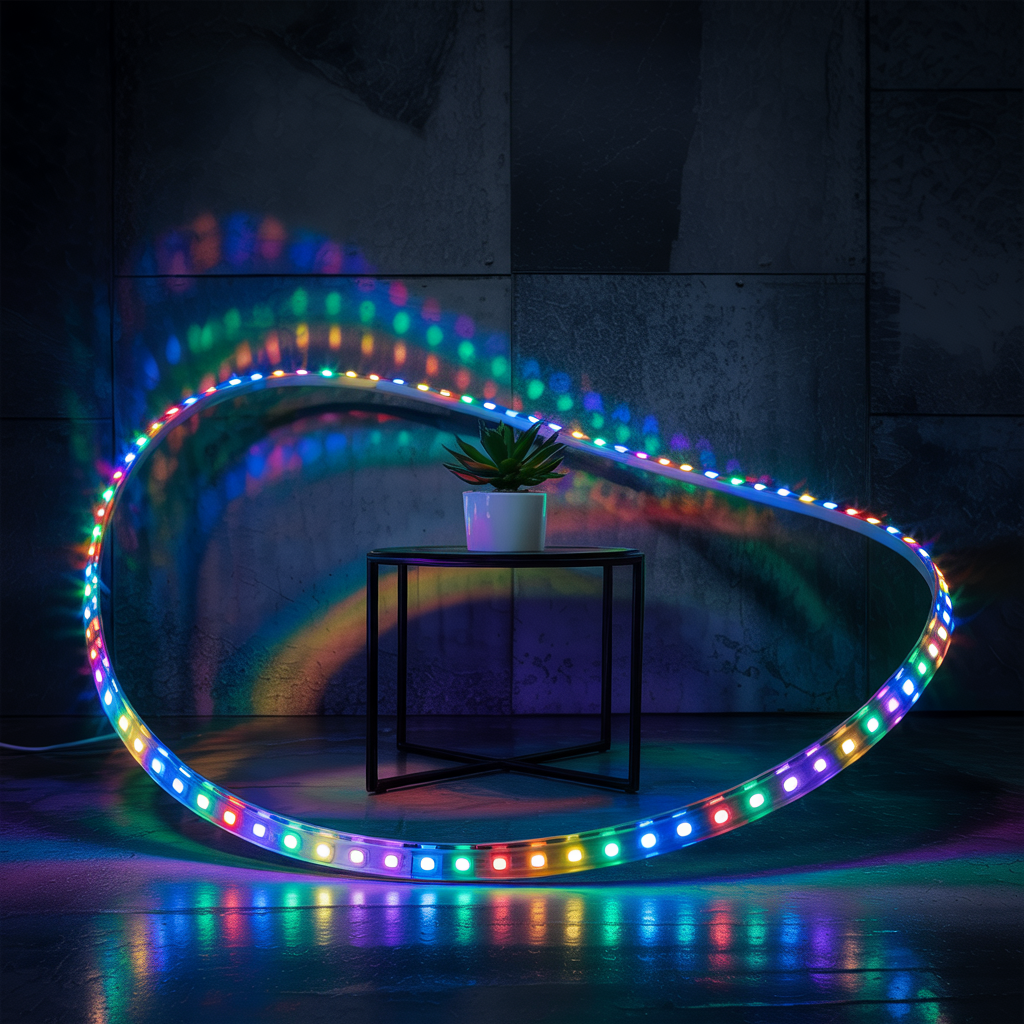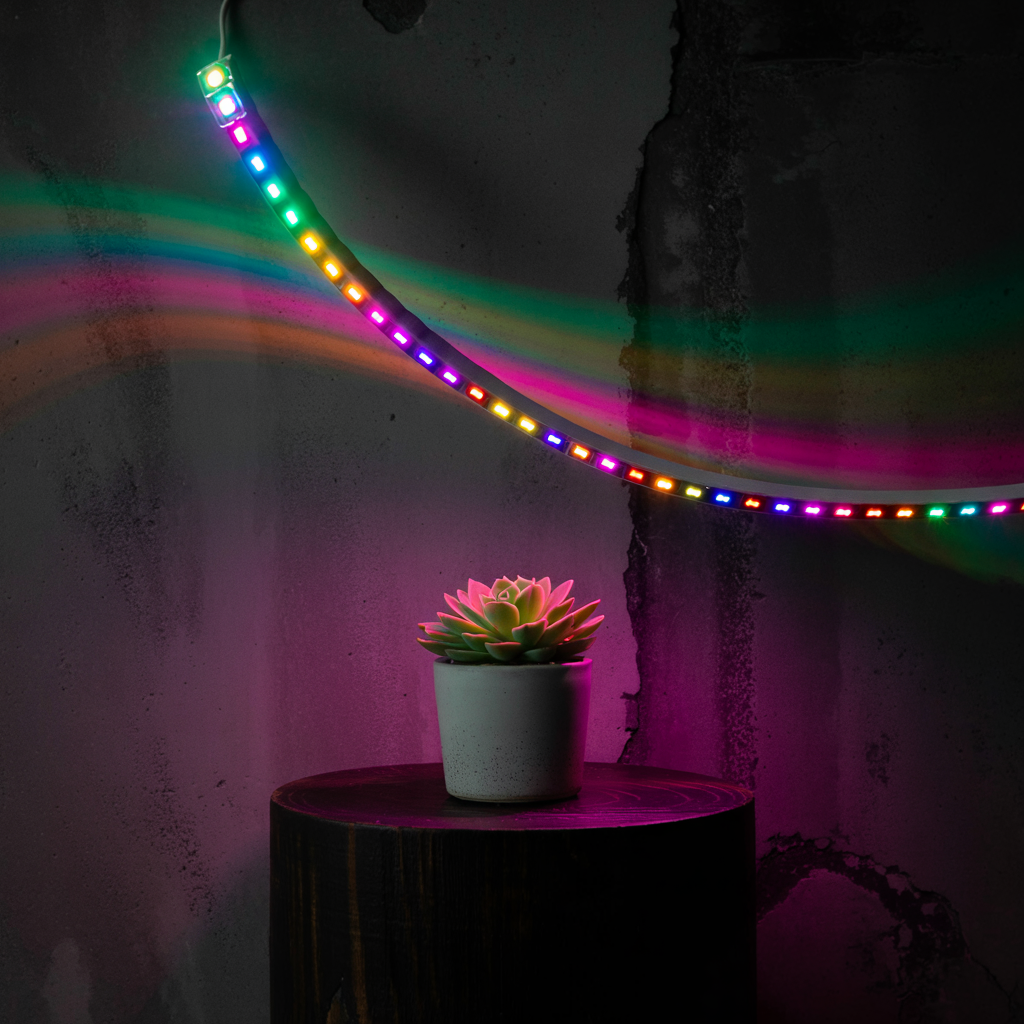What LED Color Helps with Sleep? Finding The Right Wavelength For Better Rest
Do you struggle to fall asleep or stay asleep? Are you constantly tired and looking for ways to improve your sleep quality? The light in your environment plays a surprisingly significant role in your sleep-wake cycle. This comprehensive guide explores What LED color helps with sleep? and how different wavelengths of light affect your body’s…
Do you struggle to fall asleep or stay asleep? Are you constantly tired and looking for ways to improve your sleep quality? The light in your environment plays a surprisingly significant role in your sleep-wake cycle. This comprehensive guide explores What LED color helps with sleep? and how different wavelengths of light affect your body’s natural rhythms. We’ll delve into the science behind light and sleep, discuss various LED colors, and provide practical tips for optimizing your bedroom lighting for better rest. You’ll learn how to choose the right LED bulbs for a more restful night’s sleep and understand the implications of various light sources on your sleep quality.
What LED color helps with sleep? Warm LED colors like red or amber help with sleep. These hues reduce blue light exposure, which interferes with melatonin production. Red light is especially effective, as it promotes relaxation without disrupting your circadian rhythm. Avoid cool white or blue LEDs close to bedtime for better sleep quality.
roughly 24-hour cycle. This rhythm is heavily influenced by light exposure. A key hormone involved is melatonin, often called the “sleep hormone.” Melatonin production increases in darkness and decreases in light. Understanding this crucial link between light and melatonin production is fundamental to understanding how LED color impacts sleep.
What LED Color Helps with Sleep?
Different Wavelengths and Their Effects

Light isn’t just light. It’s composed of various wavelengths, each with a different effect on our bodies. Blue light, found abundantly in sunlight and many electronic devices, is particularly potent at suppressing melatonin production, making it harder to fall asleep. Conversely, longer wavelengths, such as those in red or amber light, have less of an impact on melatonin production.
Related Article: Can You Cut Govee LED lights? A Comprehensive Guide
LED Color Temperature and its Relation to Sleep
Kelvin (K) Scale Explained
LED light is measured in Kelvin (K), a scale representing color temperature. Lower Kelvin values (e.g., 2700K) correspond to warmer colors like yellow or orange, while higher Kelvin values (e.g., 6500K) represent cooler colors like blue or white. For optimal sleep, you generally want warmer light in your bedroom to avoid disrupting melatonin production.
Warm White LED (2700K-3000K): The Best Choice for Sleep?
Benefits of Warm White Lighting
Warm white LED lights, falling within the 2700K-3000K range, are often considered the best option for bedrooms. These lights emit less blue light, minimizing interference with melatonin production and promoting better sleep. They create a relaxing and soothing atmosphere, contributing to a more comfortable sleep environment.
Cool White LED (5000K-6500K): Why It’s Not Ideal for Bedrooms

Negative Effects of Cool White Light
Cool white LED lights, higher on the Kelvin scale, emit more blue light. This can suppress melatonin production and disrupt your circadian rhythm, leading to difficulty falling asleep and poor sleep quality. While these lights might be suitable for task lighting in other areas of your home, they should be avoided in the bedroom.
Read More: High Ceiling Lighting Ideas: Transform Your Tall Spaces With Style
Red Light Therapy and Sleep
Potential Benefits and Limitations
Red light therapy, using low-level red light, has shown some promise in improving sleep in certain individuals. However, more research is needed to fully understand its efficacy and potential side effects. Currently, red light therapy for sleep is not a widely accepted mainstream solution, and its application requires careful consideration.
Choosing the Right LED Bulbs for Your Bedroom
Factors to Consider When Buying
When selecting LED bulbs for your bedroom, pay close attention to the color temperature (Kelvin value). Look for bulbs within the 2700K-3000K range for a warm white light. Also, consider the brightness (lumens) – a dimmer light is generally better for sleep. Read reviews and compare prices before making your purchase.
Setting Up Your Bedroom for Optimal Sleep
Creating a Relaxing Sleep Environment
Optimizing your bedroom environment for sleep goes beyond just the lighting. Consider using blackout curtains to minimize light exposure from outside, keeping your room cool and quiet, and establishing a consistent sleep schedule. These factors, in combination with proper lighting, can significantly improve your sleep quality.
Comparing Different LED Colors for Sleep
A Side-by-Side Comparison Table
Here’s a simple comparison table to illustrate the differences between LED colors and their suitability for sleep:
| LED Color | Kelvin (K) | Melatonin Effect | Suitability for Sleep |
|---|---|---|---|
| Warm White | 2700-3000 | Minimal suppression | Excellent |
| Cool White | 5000-6500 | Significant suppression | Poor |
| Red | Varied | Complex, requires more research | Potentially beneficial, but needs more study |
Limitations of Using LED Lighting for Sleep Improvement
Individual Variations and Other Factors
While choosing the right LED color can significantly impact sleep, it’s important to remember that individual responses to light vary. Other factors like stress, diet, and underlying medical conditions can also play a significant role in sleep quality. LED lighting is one piece of the puzzle, not the complete solution.
The Science Behind Blue Light and Sleep Disruption
How Blue Light Affects Your Brain
Blue light’s disruptive effect on sleep stems from its ability to suppress melatonin production by activating specific cells in the retina of your eye. These cells send signals to your brain, suppressing melatonin and delaying the onset of sleep. This effect is especially pronounced in the evening.
Natural Light and Its Influence on Sleep
Balancing Natural and Artificial Light
While artificial light plays a significant role in our sleep patterns, natural light is also crucial. Exposure to sunlight during the day helps regulate your circadian rhythm and improve sleep quality. Striking a balance between sufficient daytime natural light and appropriate artificial light at night is key for optimal sleep.
Smart Bulbs and Sleep Modes
Utilizing Technology for Better Sleep
Many smart bulbs now offer customizable color temperatures and sleep modes. These features allow you to adjust the color and intensity of the light throughout the night, further optimizing your sleep environment. Phillips Hue and LIFX are examples of smart bulb systems with such capabilities.
Other Factors Influencing Sleep Quality
Beyond Lighting: Diet, Exercise, and Stress
Addressing sleep issues requires a holistic approach. Factors beyond lighting, such as diet, regular exercise, stress management techniques, and maintaining a consistent sleep schedule, play a vital role in overall sleep quality. Poor diet, lack of exercise, and chronic stress can significantly impact sleep even with optimal lighting.
Sunlight Exposure and its Impact on Circadian Rhythm Regulation
Maximizing Daytime Light Exposure
Getting enough sunlight during the day is crucial for regulating your circadian rhythm. Aim for at least 30 minutes of sunlight exposure in the morning. This exposure helps to suppress melatonin production in the daytime, creating a clearer distinction between your sleep and wake cycles.
Frequently Asked Questions
What is the best Kelvin value for a bedroom light?
For optimal sleep, aim for warm white LED lights in the 2700K-3000K range. This color temperature emits less blue light, minimizing its disruptive effect on melatonin production.
Can I use red light to improve my sleep?
Red light therapy shows some promise, but more research is needed. Its effectiveness for sleep isn’t definitively established.
How does blue light affect my sleep?
Blue light from screens and some LEDs suppresses melatonin, making it harder to fall asleep. Minimize blue light exposure before bedtime.
Are smart bulbs worth it for sleep improvement?
Smart bulbs offer customizable color temperature and sleep modes, making them a convenient way to optimize your bedroom lighting for better sleep. However, they represent an additional investment.
How can I reduce blue light from my electronic devices?
Use blue light filters on your devices or reduce screen time before bed. Consider warm-toned settings for better sleep.
What are some non-lighting factors affecting sleep?
Stress, diet, exercise, and sleep schedule all play significant roles. Address these factors for a holistic approach to sleep improvement.
Final Thoughts
Finding the right LED color that helps with sleep is a crucial aspect of creating a healthy sleep environment. Warm white LED lights (2700K-3000K) offer the best balance, minimizing the disruptive effect of blue light on melatonin production. While LED color is a significant factor, remember that it’s just one piece of the puzzle. Maintaining a healthy lifestyle through regular exercise, a balanced diet, stress management, and consistent sleep schedules is just as important for achieving restful, quality sleep. Prioritize getting sufficient natural sunlight during the day. By combining proper lighting with other healthy habits, you can significantly improve your sleep quality and enjoy the restorative power of a good night’s rest. Remember to assess your individual needs and preferences when selecting lighting for your bedroom. Consider investing in smart bulbs for additional customization options, allowing you to create the optimal sleep-promoting environment tailored to your specific needs. Experiment with different options and find the setting that works best for you.

